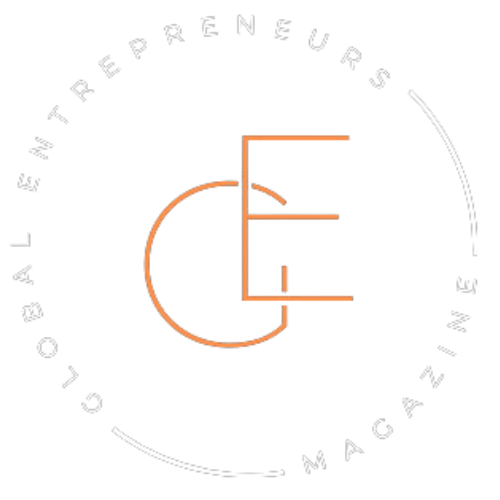Most people walk past problems. He stared straight at one and couldn’t look away.
It wasn’t flashy. It wasn’t trending. But it bothered him—how clunky everything felt, how people accepted broken systems as normal. Everyone else shrugged and moved on. He didn’t.
At first, it was just an itch. A quiet frustration. He kept seeing the same gap, the same friction, in boardrooms, in shop floors, in customer complaints no one read. And somewhere in between all the noise, a question took hold: What if this could be done differently?
No whiteboard epiphany. No investor pitch deck. Just one person deciding not to accept the script.
The early days weren’t about strategy—they were about instinct. About pushing through doubt, brushing off the polite smiles from friends who didn’t get it, and refusing to bury the thought like so many others do. This wasn’t ambition for ambition’s sake. It was conviction. And it would go on to crack open an entire industry.
The idea that wouldn’t let go
He tried to shelve it, more than once.
Told himself it wasn’t the right time. That someone smarter, richer, louder would eventually fix it. But the idea kept circling back. In meetings. In traffic. At 2 a.m. when sleep was supposed to be simple.
It wasn’t a business plan yet. It was more like a nagging truth he couldn’t unsee. Every time he watched people work around the problem, waste hours, lose money, or just settle, the feeling grew louder. This doesn’t have to be this way.
Still, there’s a long road between noticing a problem and deciding to own it.
He started small. A scribble on a napkin. A question tossed into the room just to see who leaned in. Most didn’t. A few did. Those early conversations didn’t lead to much, but they kept him going. Then came the first test—a rough prototype, a back-of-the-envelope calculation, a proof of concept that was barely holding together. But it worked. Not perfectly, not impressively—but enough to show it wasn’t all in his head.
That was all it took. One tiny win. And the idea stopped being optional.
Walking the edge: risks, ridicule, and resolve
He didn’t have the safety net most people wait for. No guaranteed funding. No loyal audience. Just a rough idea and a willingness to look foolish.
He left a stable job. Burned through savings faster than he planned. Some days felt like progress. Most felt like trying to run underwater.
People didn’t always say it out loud, but he saw it in their eyes—Why would anyone bet on this?
There were moments he almost agreed. When partnerships fell apart. When a shipment went missing. When a so-called mentor told him he was chasing something that didn’t need fixing.
But he didn’t back off. He simplified. He asked better questions. He listened harder. And somehow, through a mess of trial and error, something started to stick.
It wasn’t validation in the traditional sense. It was clarity. He realized he wasn’t building a business just to be right. He was proving, step by painful step, that an entire industry had been sleepwalking—and someone had to wake it up.
The ripple turns tidal

At first, it was background noise. A handful of early adopters giving it a shot, more out of curiosity than belief. But they didn’t go back. They told people. Those people told more.
Soon, competitors started asking quiet questions. Not praise—just suspicion. Why is this working? What’s he doing differently? Some tried to copy. Others dismissed it as luck. Either way, they were paying attention now.
He didn’t make noise for attention. He made change. And that’s what got noticed.
Vendors changed how they priced. Customers asked smarter questions. Even the big names—the ones who once ignored him—started shifting their language, adjusting their offers, mimicking pieces of his model without ever admitting where it came from.
The shift wasn’t dramatic. It was steady. Like a tide creeping in while no one’s watching. But the signs were everywhere. The old rules didn’t hold the same weight. People were finally seeing what he saw from the beginning: the way things were wasn’t the way they had to stay.
A blueprint for what’s possible
He didn’t set out to become a symbol. But that’s what happened.
Others started reaching out—not for favors, but for perspective. Founders, freelancers, even employees stuck in slow systems. They weren’t chasing his exact model. They just wanted to know how he saw what no one else saw.
He never claimed to have a formula. What he had was something harder to teach: clarity, guts, and the willingness to keep going when nothing makes sense yet.
People assumed he had connections. He didn’t. They assumed he had funding. He didn’t. What he had was a lens—a way of spotting where the cracks were and deciding not to step around them.
His story became less about the business and more about what happens when someone refuses to let complacency win. He didn’t preach. He didn’t build a brand around hustle. He just kept showing up, doing the hard thing, and proving that bold doesn’t have to mean reckless—and vision doesn’t need permission.
Looking back to see the cracks they created
The industry didn’t collapse. It bent.
Processes that once felt immovable were suddenly questioned. Outdated tools got replaced. Decision-makers who once shrugged at change started rewriting policies. The same people who doubted him in boardrooms were now building off the path he cleared—quietly, sometimes without acknowledgment, but clearly.
You could see it in the way customers talked. In the language that showed up on competitor websites. In the job postings that started asking for skills no one valued five years ago.
His approach wasn’t a plug-and-play solution. It forced people to think differently—to notice the friction they once accepted, and to do something about it.
He didn’t just leave a legacy. He left a trail of cracks in the old foundation. Cracks that widened into passageways for others with ideas, frustrations, and that same refusal to settle.
The quiet message behind the noise
There was no grand finale. No mic drop. Just steady proof that one bold move can stretch far beyond its origin.
He didn’t shout over the noise. He moved through it with clarity. That’s what stuck with people—not just what he built, but how he stayed grounded while everything around him shifted.
His story isn’t about genius or luck. It’s about refusing to wait for permission. About seeing a problem and deciding, “This ends with me.”
The ripple is still moving. Others are stepping forward now, not because they want to copy him—but because they finally believe they don’t have to follow a broken script.
Somewhere out there, someone is staring at their own friction point. Wondering if it’s worth the risk to speak up. To act. To build.
And maybe they will. Because someone before them already proved what one person can do.




